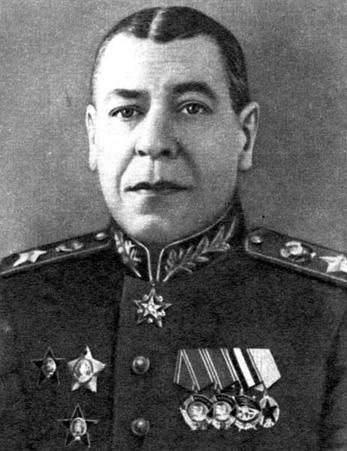(1882-1945)
Marshal of the Soviet Union. Born in Zlatoust in the southern Urals on 2 October 1882, Boris Shaposhnikov began his military career in the Russian Imperial Army as a private in 1901. He became an officer two years later on graduation from the Moscow Military College. In 1910, after graduation from the General Staff Academy, he served in the Tashkent Military District and in Russian Poland. During World War I, he served in Galicia, and in 1917, he was promoted to colonel and given command of a grenadier regiment.
Shaposhnikov joined the Red Army in 1918 after the Bolshevik Revolution and served on its field staff during the Russian Civil War. In 1923, he published his first book, The Cavalry; shortly thereafter, he published The Vistula: The History of the 1920 Campaign. He was an assistant to chief of staff M. V. Frunze by April 1924. In 1926, Shaposhnikov took command of the Leningrad Military District. He became known internationally for his three-volume study The Brain of the Army (1927-1929), in which he argued that the General Staff should be the sole agency directing the Red Army.
Long considered politically suspect, Shaposhnikov was admitted to Communist Party membership in 1930; the usual probationary period was waived. From 1928 to 1931, he was head of the Red Army staff. He was demoted in 1931, allegedly because he published an account of the Civil War that gave Leon Trotsky more credit than Josef Stalin could abide. From 1931 to 1937, Shaposhnikov was successively commander of the Volga Military District, chief of the Frunze Military Academy, and commander of the Leningrad Military District. Shaposhnikov then served on the board that helped purge the Red Army in 1937. One of those purged was his successor as chief of the General Staff, Marshal Mikhail Tukhachevsky.
Appointed chief of staff of the army and deputy commissar of defense in May 1937, Shaposhnikov did what he could to modernize and improve the Red Army, although much of his work in this regard was blocked by the opposition of Stalin and others. He also was unable to prevent the disbanding of seven mechanized corps in November 1939, despite Colonel General Georgii Zhukov’s success with armor in the Battle of Khalkin-Gol in Manchuria.
Shaposhnikov drew up the plans for the Soviet occupation of eastern Poland at the beginning of World War II and the belated successful offensive in the Soviet-Finnish War (Stalin at first ignored his counsel). Promoted to marshal of the Soviet Union in May 1940, Shaposhnikov relinquished the post of chief of staff because of poor health, although he retained the position as deputy defense commissar.
On the eve of the German attack, Shaposhnikov urged Stalin to abandon forward positions in Poland in favor of the Stalin Line along the Soviet Union’s former border. Stalin dismissed Shaposhnikov from his posts for this advice. With the German invasion, Stalin reinstated Shaposhnikov as chief of the General Staff on 29 July 1941 in a reorganized Stavka that apparently followed the form suggested by Shaposhnikov in his study The Brain of the Army. Although ill, Shaposhnikov nonetheless played an important role in planning the Soviet defense of Moscow and the subsequent Soviet counterattack. In June 1942, he advised against an attack on Kharkov as being premature. He left his post as chief of the General Staff for reasons of health on 26 June 1942. Although still ill, he remained on the Stavka and as deputy commissar of defense. In June 1943, he became commandant of the Voroshilov Military Academy. He continued to hold this post and serve on the Stavka until his death in Moscow on 26 March 1945.
References Erickson, John. The Road to Stalingrad. Boulder, CO: Westview Press, 1984.—. The Soviet High Command: A Military-Political History, 1918-1941. Boulder, CO: Westview Press, 1984 (reprint of New York: Macmillan, 1962 ed.). Glantz, David M. and Jonathan House. When Titans Clashed: How the Red Army Stopped Hitler. Lawrence: University Press of Kansas, 1995. Rzheshevsky, Oleg. “Boris Mikhailovich Shaposhnikov.” In Harold Shukman, ed., Stalin’s Generals. New York: Grove Press, 1993.
